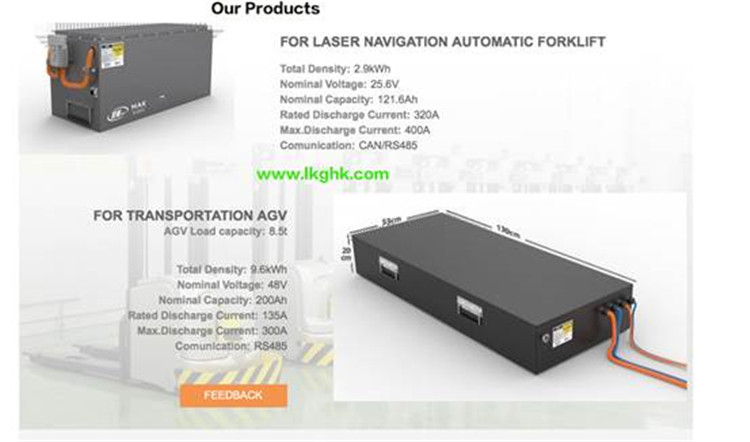- 22
- Dec
Exploration and discovery is conducive to product development of smaller, lighter and lower car batteries
According to foreign media reports, a group of researchers at the Brookhaven National Laboratory (Brookhaven National Laboratory) of the U.S. Department of Energy (DOE) has determined new details about the internal reaction mechanism of lithium metal anode batteries. , An important step for cheaper electric vehicle batteries.
Battery researchers at Brookhaven National Laboratory (Image source: Brookhaven National Laboratory)

Remanufacturing of Lithium Anode
From smart phones to electric vehicles, we can see the tradition. Although lithium batteries have enabled many technologies to be widely used, they still face challenges in providing long-distance power for electric vehicles.
Battery500, an alliance led by university researchers funded by the U.S. Department of Energy’s Pacific Northwest National Laboratory (PNNL) and the U.S. Department of Energy, aims to create a battery cell with an energy density of 500Wh/kg. In other words, it is twice the energy density of today’s most advanced batteries. To this end, the alliance focuses on batteries made of lithium metal anodes.
Lithium metal batteries use lithium metal as the anode. In contrast, most lithium batteries use graphite as the anode. “The lithium anode is one of the key factors in reaching the Battery500 energy density goal,” the researchers said. “The advantage is that the energy density is twice that of existing batteries. First, the specific capacity of the anode is very high; second, you can have a higher voltage battery, and the combination of the two can have a higher energy density.”
Scientists have long recognized the advantages of lithium anodes; in fact, the lithium metal anode is the first anode coupled to the battery cathode. However, due to the lack of “reversibility” of the anode, that is, the ability to charge through a reversible electrochemical reaction, battery researchers ended up using graphite anodes instead of lithium metal anodes to make lithium batteries.
Now, after decades of progress, researchers are confident to realize a reversible lithium metal anode to push the limits of lithium batteries. The key is the interface, the solid material layer that forms on the battery’s electrodes during the electrochemical reaction.
“If we can fully understand this interface, it can provide important guidance for the material design and manufacture of reversible lithium anodes,” the researchers said. “But understanding this interface is quite a challenge because it is a very thin layer of material, only a few nanometers thick, and it is sensitive to air and humidity, so handling samples is tricky.”
This interface is visualized in NSLS-II
In order to solve these challenges and “see” the chemical composition and structure of the interface, the researchers used the National Synchrotron Radiation Light Source II (NSLS-II), a user facility of the DOE Science Office of Brookhaven National Laboratory, which produces super bright X-rays to study the material properties of the interface on the atomic scale.
In addition to using the advanced capabilities of nSLS-II, the team also needs to use a beam line (experimental station) that can detect all components of the interface, and use high-energy (short-wavelength) X-rays to detect crystalline and amorphous phases.
“The chemistry team adopted the XPD multi-mode approach, using two different techniques provided by the beamline, X-ray diffraction (XRD) and distribution function (PDF) analysis,” the researchers said. “XRD can study crystalline phases, and PDF can study amorphous phases.”
XRD and PDF analysis revealed exciting results: Lithium hydride (LiH) exists in the interface. For decades, scientists have been arguing about the existence of LiH in the interface, creating uncertainty about the basic reaction mechanism that forms the interface.
“LiH and lithium fluoride (LiF) have very similar crystal structures. Our claim about the discovery of LiH has been questioned by some people who believe that we mistake LiF for LiH,” the researcher said.
In view of the controversy involved in the study and the technical challenges of distinguishing LiH from LiF, the research team decided to provide multiple pieces of evidence for the existence of LiH, including conducting air exposure experiments.
“Researchers said: “LiF is stable in air, but LiH is unstable. If we expose the interface to humid air, and if the amount of compound decreases over time, we can confirm that we are indeed seeing LiH, not LiF, and it is LiF. Due to the difficulty of distinguishing LiH from LiF and the air exposure experiment has never been performed before, LiH is most likely to be mistaken for LiF in many literature reports, or it is not observed due to LiH decomposition in a humid environment. ”
The researcher continued. “The sample preparation work done by PNNL is critical to this research. We suspect that many people fail to identify LiH because their samples were exposed to a humid environment before the experiment.” If you did not collect the samples correctly, seal the samples and Shipping samples, you may miss LiH. ”
In addition to confirming the existence of LiH, the team also solved another long-standing mystery surrounding LiF. LiF has long been considered a beneficial component of the interface, but no one fully understands the reason. The team determined the structural differences of LiF within the interface and most of the structural differences of LiF itself, and found that the former promoted the transport of lithium ions between the anode and the cathode.
Battery scientists from Brookhaven National Laboratory, other national laboratories, and universities continue to cooperate. The researchers said that these results will provide much-needed practical guidance for the development of lithium metal anodes.
